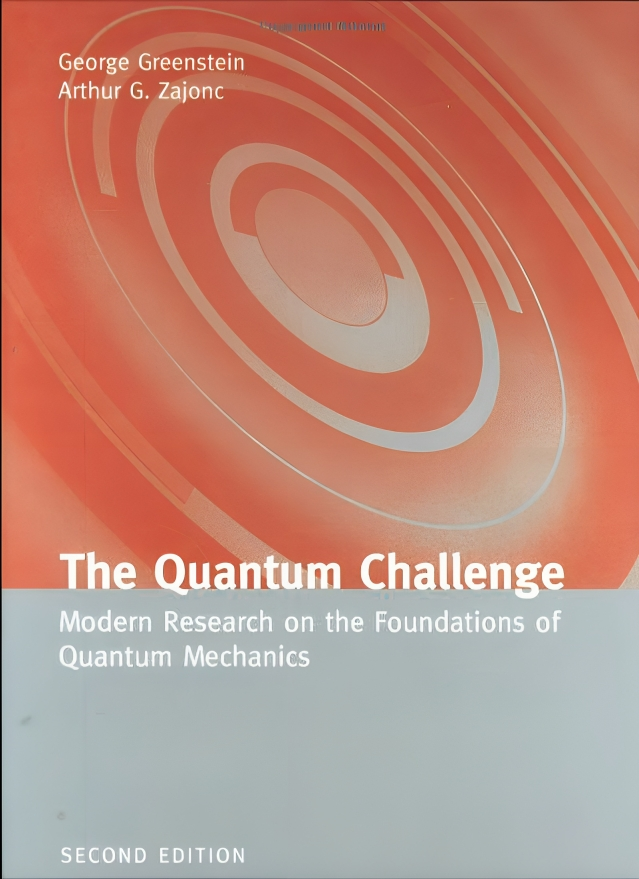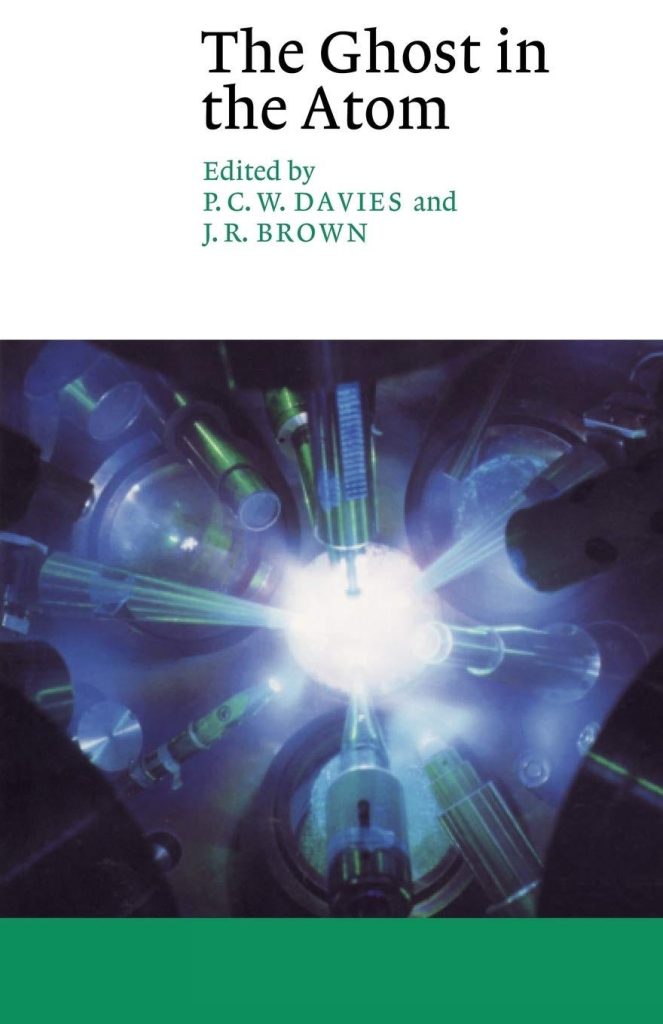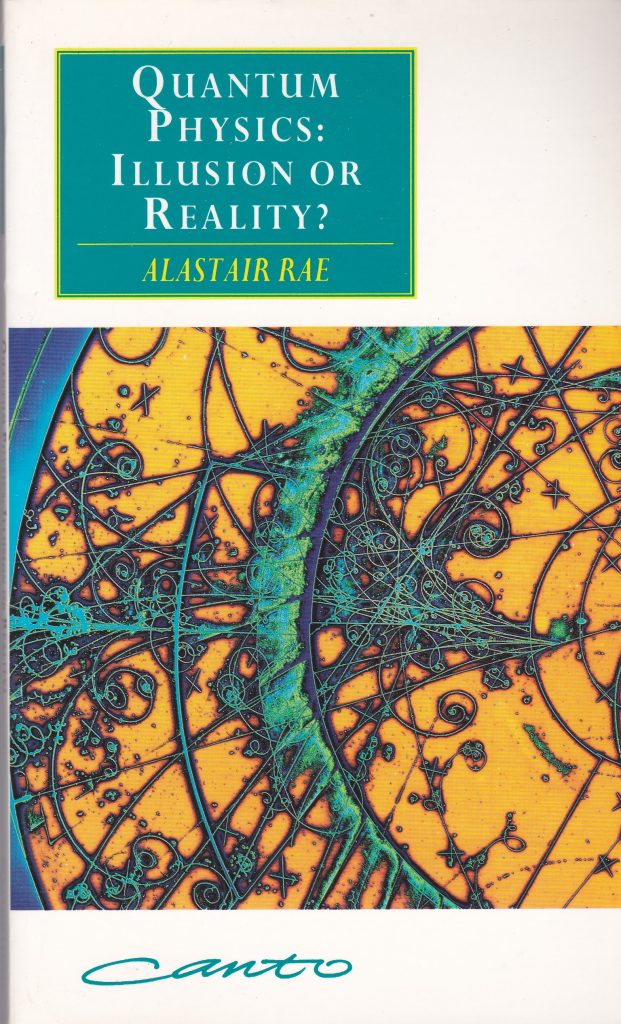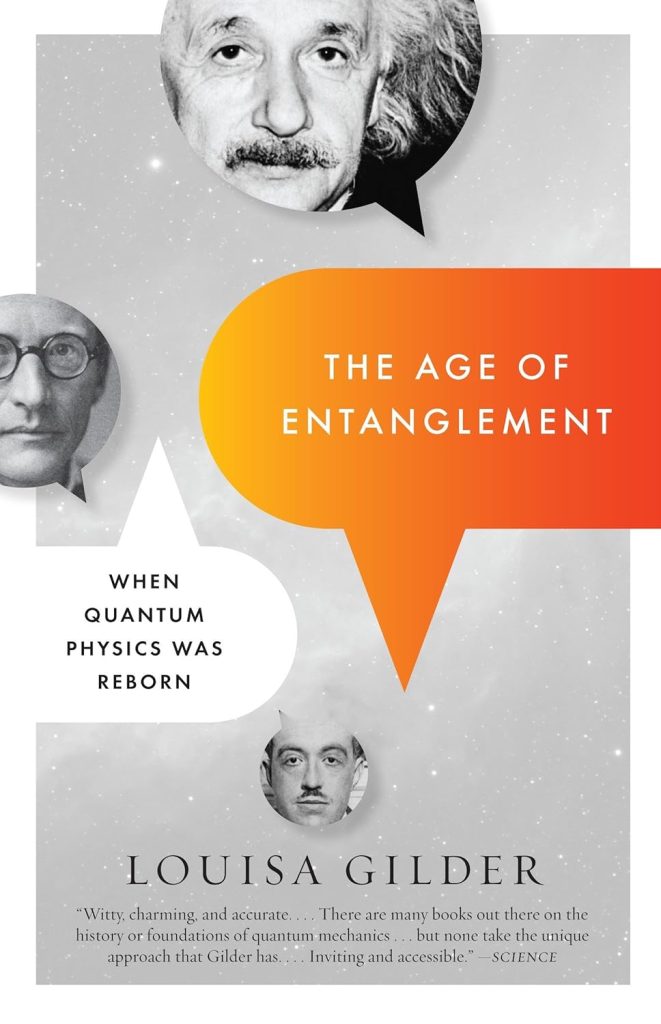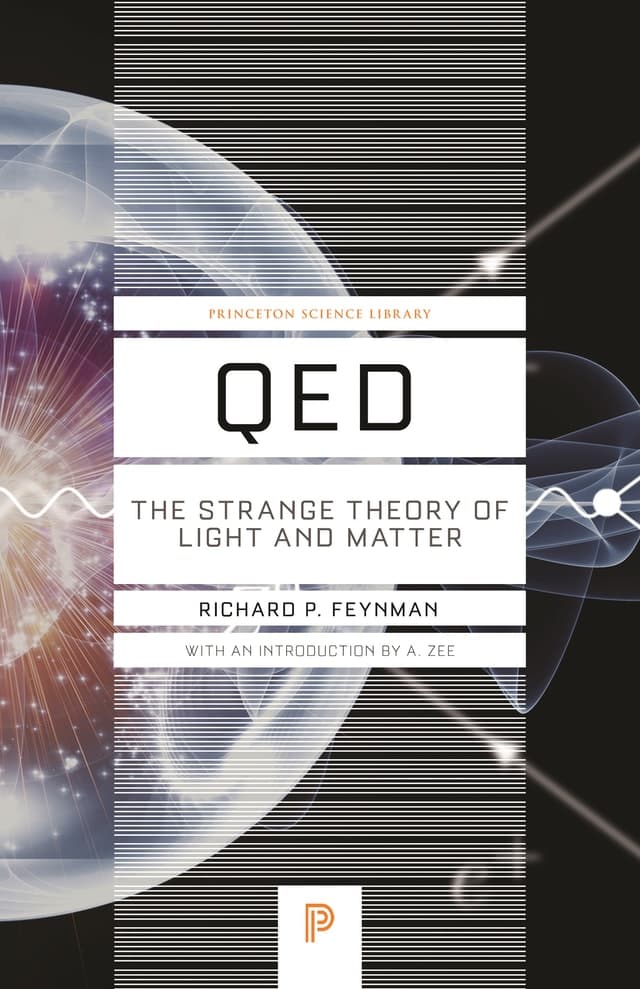Quantum physics, a fascinating and complex field of study, can often seem like an insurmountable challenge for the novice learner. Yet, with the right resources, anyone can delve into this intriguing world of particles, quantum states, and wave-particle duality. For those eager to embark on this journey, I have compiled a list of the top 10 quantum physics books that brilliantly blend scientific intricacies with lucid explanation. These books cater to a range of readers, from the curious beginner to the seasoned physicist, providing a remarkable balance of depth and accessibility.
This selection of quantum physics books, tailored for a general audience, represents personal favorites that have stood out in one way or another. Remember, this is not an exhaustive list, but a curated collection from the spectrum of popular quantum physics literature that I’ve gotten some recommendations from the experts.
Table of Contents
10 Quantum Physics Books for Avid Learners

The list below contains 10 quantum physics books that provide a compelling discourse on quantum reality. These texts meticulously explore why quantum reality is logical, what the opposing viewpoints are, and the very essence of quantum reality. They delve into the fundamental principles of quantum physics, debunking common misconceptions, and challenging traditional perspectives with innovative theories.
These quantum physics books serve as a comprehensive resource for readers, breaking down complex quantum phenomena into understandable concepts, and presenting a coherent picture of the quantum world. From examining the philosophical implications of quantum theory to showcasing its practical applications, these books promise a captivating journey through the marvels of quantum reality.
“The Quantum Challenge: Modern Research on the Foundations of Quantum Mechanics” by George Greenstein is an amazing book that explores the mind-bending concepts of quantum mechanics and how they challenge our understanding of the physical world.
While these topics are usually reserved for scientists, this book is designed to make them accessible to students of physical science, mathematics, and engineering. The new second edition digs deep into the profound questions of quantum mechanics, helping readers develop a deeper understanding and appreciation for this fascinating field.
Whether you’re a student, teacher, or just someone curious about the mysteries of the universe, this book is a must-read for anyone interested in quantum physics. Get ready to be amazed!
A comprehensive and captivating post-graduate text on non-relativistic quantum mechanics. Assumes prior knowledge of quantum mechanics basics at the undergraduate level. Requires familiarity with classical electromagnetism, Lagrangian and Hamiltonian mechanics, as well as a strong foundation in linear algebra, vector calculus, and vector spaces.
The book is dense and technical, but the explanations are clear, interesting, and supported by experimental results. Intuition is provided when relevant. Gaps in derivations enhance understanding. The exercises are pedagogically appropriate and at the right difficulty level. However, this book requires focus, time, and close reading to complete the missing derivation steps.
The chapters on linear algebra, Dirac notation, theory of angular momentum, and Feynman path integrals are exceptional. The author delves deep into these subjects with elegance. The “Heisenberg picture” and Ehrenfest theorem are brilliantly derived. The treatment of spin precession and symmetries is also noteworthy.
The only drawback is the excessive focus on perturbation theories. Additionally, some notational choices are unconventional and not very helpful.
Overall, this demanding but rewarding book is highly recommended, serving as a valuable reference text as well.
Quantum mechanics can be mind-bogglingly complex. Even after reading this book twice, I still struggle to fully grasp the intricate details behind the Aspect experiment, let alone the mathematics that support it and its deeper implications. However, that is not the main focus of this book. Its purpose is to shed light on the controversies and differing interpretations of quantum mechanics for a wider audience.
Considering that quantum mechanics is one of the most successful scientific theories ever, with its ability to predict experimental results, it is only natural for physicists to seek a deeper understanding of its physical meaning. But interpreting quantum mechanics is no easy task and can even challenge traditional physics principles.
This book is quite dated, so it is advisable to explore more recent perspectives on Quantum Mechanics to see if any progress has been made in resolving these issues.
If you want to truly grasp the concepts of quantum mechanics, this book may not be the best choice. However, if you have some background knowledge and are curious about the quantum world as a non-specialist, this is the perfect book for you!
The author effectively simplifies the complexity of quantum mechanics, using diagrams to aid in understanding. While I had to look up Bell’s theorem on the internet, overall the author does a great job of explaining the strangeness of the quantum world and the meaning behind experimental results.
But the real gem of this book begins in the fourth chapter, where the author delves into the measurement problem and the various interpretations of quantum mechanics, such as Copenhagen’s interpretation, the multiverse theory, GRW theory, thermodynamic irreversibility, and consistent histories. This section alone deserves a 5-star rating.
Starting from the fifth chapter, the book seamlessly combines physics and philosophy, exploring each interpretation from a scientific standpoint and delving into the implications they have on our understanding of reality.
Discover the mind-boggling world of quantum physics and its profound implications on our perception of reality in this captivating book.
Discover the fascinating world of quantum entanglement in this captivating book. Delve into the concept that forever connects two things regardless of distance, and explore its complex nature through the eyes of scientists who pushed the boundaries of quantum physics.
“The Age of Entanglement” is not just a book about conversations; it’s a journey through time, recounting the evolution of this groundbreaking theory. Drawing from an array of sources including journals, letters, and articles, author Louisa Gilder weaves fact and fiction together, taking us on a mesmerizing exploration of scientific progress.
Gilder humanizes the physicists involved, providing insight into their quirks and flaws, as well as their relentless pursuit of knowledge. Through their shared pursuit, these scientists become entangled themselves, alternately supporting and questioning each other’s work. Egos collide, hero worship emerges, and Gilder’s fictional contributions bring these relationships to life.
By focusing on renowned figures such as Bohm, Bohr, Schroedinger, and Bell, Gilder demonstrates how quantum leaps were made in this field. Personal touches, casual conversations, and moments of brilliance amidst triviality make “The Age of Entanglement” a truly captivating read.
While Gilder’s extensive collection of sources may seem overwhelming, she skillfully organizes them in a way that both average readers and scientists can appreciate. Eavesdropping on real and imagined conversations is both educational and enjoyable, providing a unique perspective on the inner workings of scientific minds.
Through her masterful storytelling, Gilder not only retraces the history of entanglement but also reveals the critical role that these personalities played in shaping the theory. It is their brilliance and ingenuity that have brought us the theory as we know it today.
“The Age of Entanglement” is a must-read for anyone intrigued by the mysteries of quantum physics. Join Gilder on this incredible journey of discovery and gain a deeper understanding of the minds behind the science.
Discover the mind-bending world of quantum “reality” in this captivating book by Nick Herbert. While many focus on quantum theory, Herbert emphasizes the distinction between theory and reality.
Curious about the Bell Theorem? Look no further! Herbert takes readers on a journey, building a foundation of understanding before delving into this famous theorem. Through a simple experiment called the Blue, Green experiment, he demonstrates how rotating a photon detector can influence the results thousands of miles away.
This groundbreaking discovery, predicted by quantum theory, challenges the limits of our understanding. Physicists have struggled to accept the implications of the Bell Theorem, resorting to alternate explanations and ignoring its profound significance. Herbert candidly explores these attempts and reveals the inadequacy of the disturbance model.
Accessible to both scientists and laymen alike, Quantum Reality: Beyond the New Physics provides a clear and concise exposition of the Bell Theorem. A must-have addition to any library!
Discover the captivating history of quantum physics and why the Copenhagen interpretation has stood the test of time in What is Real? This compelling book is a must-read not only for professional physicists, but for anyone interested in the fascinating world of science.
With a solid overview of quantum theory and its various interpretations, What is Real? also delves into the sociological history of the field, offering insights from both European and American perspectives. Here, you’ll learn about the science itself, the practice of scientific inquiry, and the philosophy of science.
Author Becker emphasizes the collaborative nature of science, shedding light on the obstacles of human pettiness, political bias, and hyper-specialization that can hinder progress. However, this is not an attack on science by any means. Becker distinguishes between healthy criticism within the scientific community and the dangerous territory of anti-science movements like creationism or climate change denial.
Sprinkled with fascinating anecdotes and stories about the scientists and the historical context, What is Real? remains focused on the bigger questions it seeks to answer. It offers a diverse and interdisciplinary exploration of the practice of 20th century physics, highlighting the remarkable progress made in a short span of time.
Accessible to all readers, no prior knowledge of quantum theory is necessary. Becker presents the concepts in an engaging manner, free of complex math, and his writing is smooth and focused. Prepare to be entertained and enthralled by this page-turner of a popular science book.
In “The Quantum Dissidents,” Olival Freire Junior offers an intriguing take on quantum physics. With a mix of academic rigor and captivating storytelling, this book sheds light on the pioneers who questioned the status quo. Their inquiries ultimately paved the way for the development of quantum information, which is now revolutionizing our understanding of computation. As quantum computers surpass classical ones, the influence of these early explorers becomes undeniable. If you’re fascinated by the lesser-known historical aspects of quantum physics, this book is a must-read.
Looking for a comprehensive and engaging guide to quantum mechanics? Look no further. “Introduction to Quantum Mechanics” is a game-changer.
What sets this textbook apart is its unique approach. Unlike others, it dives straight into the mathematical formalism from the get-go. Brace yourself for mind-boggling equations right from the first page. But fear not, because author Griffiths expertly breaks down complex concepts into digestible portions.
While the book does involve a fair amount of mathematics (it is quantum mechanics, after all), Griffiths doesn’t dwell on complete derivations for everything. He trusts that you can handle it and provides references for further exploration. And trust me, you’ll appreciate the streamlined approach. Quantum mechanics is complex, and this book focuses on giving you a solid understanding without overwhelming you with unnecessary details.
To truly benefit from this gem, embrace the challenge of problem-solving. The more exercises you tackle, the deeper your grasp of the material will be. A solutions manual is readily available online, making it easier to put your newfound knowledge to the test.
Years later, I still find myself turning to this textbook as a trusted reference in my professional life.
In summary: “Introduction to Quantum Mechanics” is an excellent book that will require dedication and effort. But the rewards? Mind-blowing.
Discover the remarkable world of Quantum Electrodynamics (QED) – the fascinating field that explores the interactions between light and matter. In this must-read book, renowned physicist Richard Feynman offers his unique insights into the subject he has personally contributed to, earning him a Nobel prize.
While Feynman aims to make the concepts accessible, it may not be suitable for absolute beginners. However, for those with a basic understanding of physics, the lucid explanations provide a fresh perspective and “aha” moments of understanding.
At just 150 pages, the book is concise but leaves readers hungry for more. Although it refrains from delving into complex math, some mathematical background would enhance the explanations in certain areas.
Although not perfect, QED is an excellent read for physics enthusiasts and anyone curious about how the world works. Don’t miss out on this enlightening journey!
Who is the king of quantum physics?
What should I study if I like quantum physics?
Additionally, you can look into the field of quantum computing, which is rapidly growing due to its potential to revolutionize technology. Finally, it may also be helpful to study the mathematical concepts that underlie quantum physics, such as linear algebra and probability theory. With these foundations, you’ll be well on your way to exploring the fascinating and puzzling world of quantum physics.


